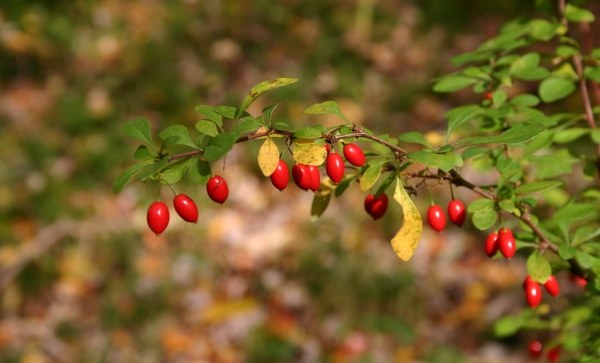
I remember these little red fruits from my childhood. I used to pick the berries along my walk to elementary school and roll them between my fingers. Firm, shiny, and somehow soothing.
Japanese barberry (Berberis thunbergii) is a pretty plant which forms a thorny border that discourages children and dogs from entering one’s yard. For this and other reasons it was introduced to the U.S. in 1875. Unfortunately by now Berberis thunbergii and its European cousin (Berberis vulgaris) have overtaken our native barberry (Berberis canadensis) and become invasive.
Japanese barberry has a secret advantage over Pennsylvania’s native plants. Deer won’t eat it so it easily forms dense, thorny thickets. But don’t plant it! It’s a tick magnet.
Studies by the Connecticut Agricultural Experiment Station in Lyme, Connecticut discovered a strong link between dense Japanese barberry thickets and Lyme disease. Deer ticks prefer these thickets for their cool, moist microclimate. White-footed mice hang out in the thickets because the larger predators can’t reach them there. White-footed mice are the main carriers of Lyme disease bacteria. The ticks bite the mice and voilà! Lots of Lyme disease.
The Adirondack Daily Enterprise wrote of this study: “Deer ticks are 67 percent more likely to be in areas infested with barberry than those areas that have native plants, and a higher percentage of ticks in infested areas carry the Lyme bacteria than those in areas that are barberry-free – 126 infected ticks per acre versus 10 per acre. When managers removed barberry plants, the number of ticks dropped up to 80 percent – a compelling outcome.”
So if you want to find deer ticks and Lyme disease, bushwhack through a barberry thicket.
The plant in this photograph was alone, growing by the side of a rail trail, but I found a tick on my pants after I took the photo.
Tick City!
(photo by Kate St. John)
Thanks for this information, Kate. My little maltese got 3 ticks recently – first time ever – and this looks like the plant along the border of my yard/woods.
Great information, Kate. Earlier this year my husband found a tick on his arm after working in the yard. After reading your article, I remembered that the area where he was working has several of these. We just spent the last couple of days ridding our yard of Japanese barberry and will plant something friendlier. We like providing food and cover for our wildlife and this plant is not the answer. Thanks!
You can pull up Japanese barberry & leave the roots exposed to kill it. Take it to the dump to get rid of it. Don’t throw it in the woods. The berries will germinate and your problem will come back to haunt you … or haunt a place previously untouched by this invasive plant.